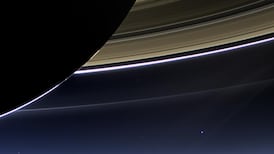The closest-ever observation of a gamma-ray burst has yielded a result that challenges current theories of how the brightest, most energetic explosions in the Universe originate.
The discovery was made by an international team of 230 scientists including researchers at the Dublin Institute of Advanced Studies (DIAS).
Astronomers, up to now, have only observed gamma-ray bursts – which can last from a few milliseconds up to several hours – in distant galaxies some 40 billion light-years from Earth. The distances involved and the fact that the bursts are once-off events have made them difficult for astronomers to fix on and study.
The opportunity arose when the High Energy Stereoscopic System, (HESS) a specialised observatory based in Namibia, and co-founded by DIAS, detected a gamma-ray burst much closer than usual – 1 billion light-years away. After it picked it up the HESS managed to lock in and observe it closely.
The scientists tracked the gamma-ray burst called GRB 190829A for three consecutive nights over 54 hours. This was a big help, as astronomers often struggle to lock in and observe a gamma-ray burst after it is detected. That’s because a burst might last a few milliseconds or, at the most, a few hours.
"Since GRB 190829A happened in our cosmic backyard its very high-energy photons were not absorbed in collisions with background light on their way to Earth as it happens over larger distances in the Universe," explains Prof Felix Aharonian, one of four DIAS scientists involved in the research, the findings of which are reported in the latest issue of Science.
The GRB 190829A burst was detected by HESS on August 29th, 2019. Scientists had never seen a burst at such close range. They knew, at this short distance, that the burst would be more intact as less of its light photons would have been lost in collisions with cosmic particles on its journey across space.
‘Far-reaching implication’
The relatively short distance to GRB 190829A from Earth also allowed scientists to make detailed measurements of its afterglow. The afterglow is the name for what astronomers observe after the initial burst of high-energy gamma-rays has subsided. It has less energy, travels at longer wavelengths, and may be visible for several days after the initial burst.
The afterglow can often be observed for longer than the initial burst, and it can hold important clues for scientists.
Existing scientific thinking on gamma-rays held that it was implausible that even the most violent events in the cosmos – such as a supernova explosion following the death of a big star – could produce sufficient amounts of energy required to generate the very high energy gamma-rays astronomers were seeing.
“According to existing theories, it seemed very unlikely that even the most powerful explosions in the universe could accelerate electrons enough to directly produce the observed very high energy gamma-rays,” Aharonian explains.
“However, we were able to determine that the characteristics of the gamma-ray and X-ray radiation are strikingly similar so that the simplest explanation is that they were produced together by the same radiation process,” he adds.
These latest findings challenge the established scientific view of how gamma-rays are produced following stellar explosions, while also posing the question of what kind of radiation process can produce gamma-rays and X-rays with similar properties.
"The far-reaching implication of this discovery highlights the need for further study in this area," says Dr Jonathan Mackey, a DIAS research fellow involved in the research. The other DIAS researchers involved were Dr Andrew Taylor and Dr Carlo Romoli.
“Looking to the future, the prospects for the detection of gamma-ray bursts by next-generation instruments look promising, which will help us to fully understand these gargantuan cosmic explosions,” Mackey concludes.











